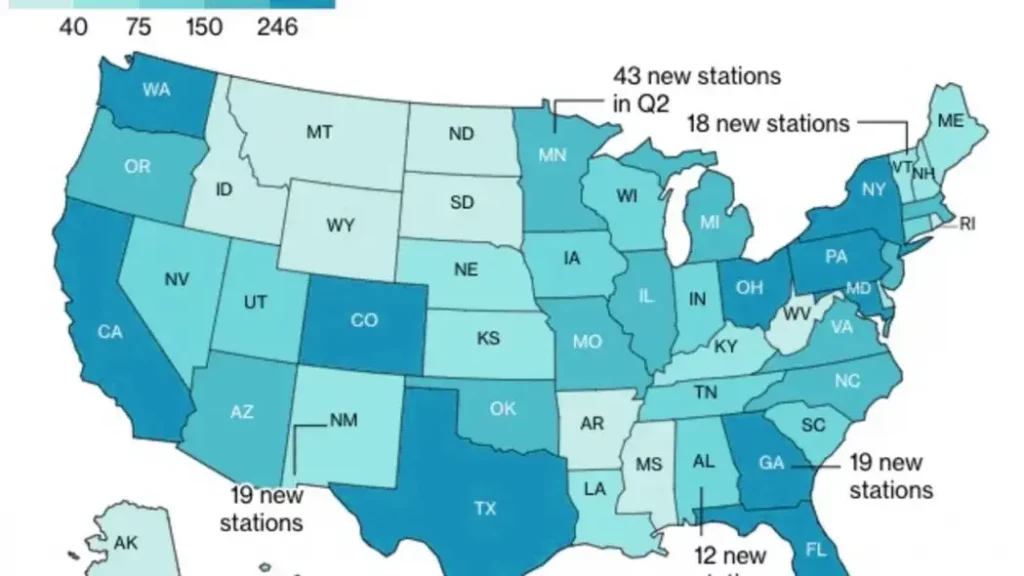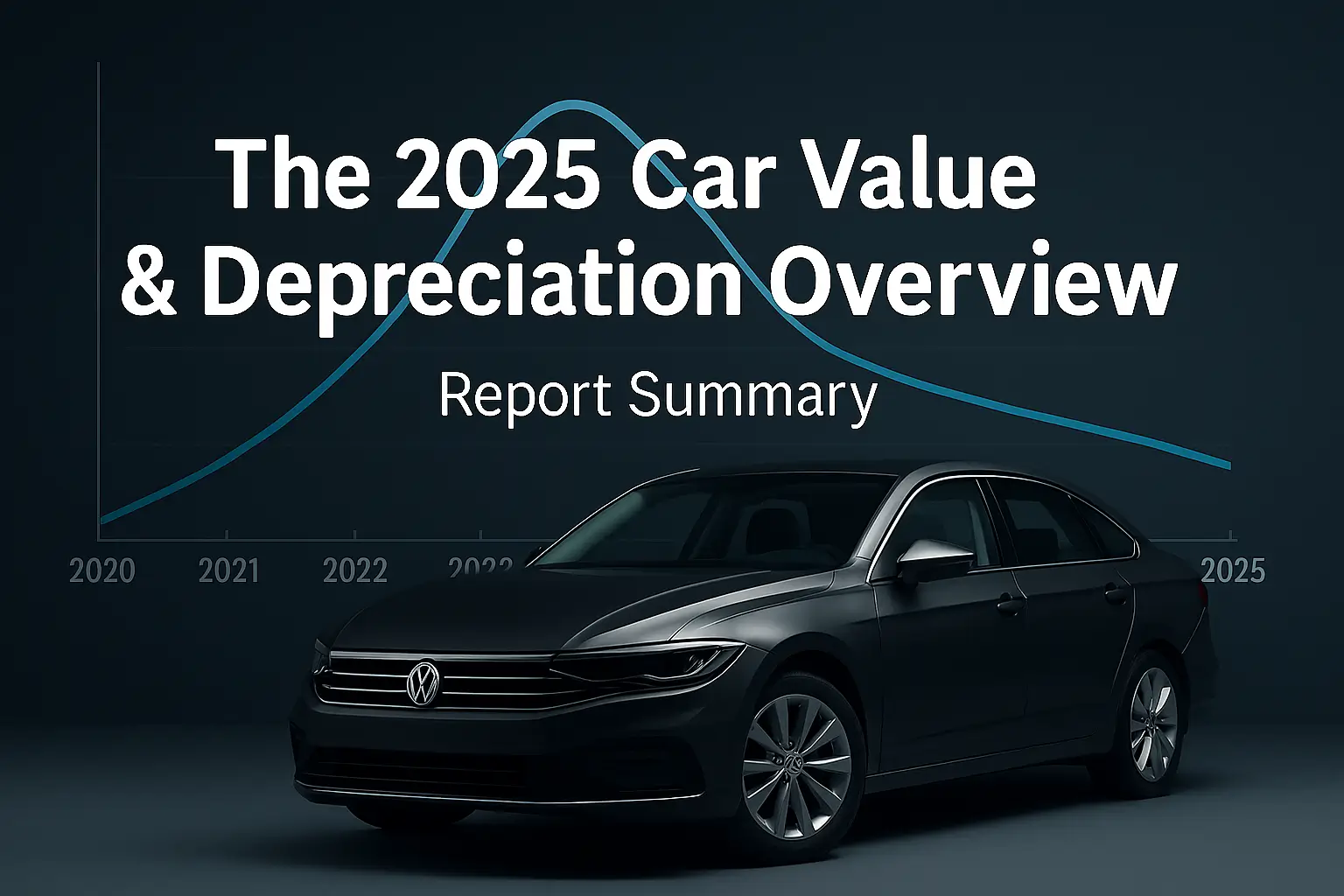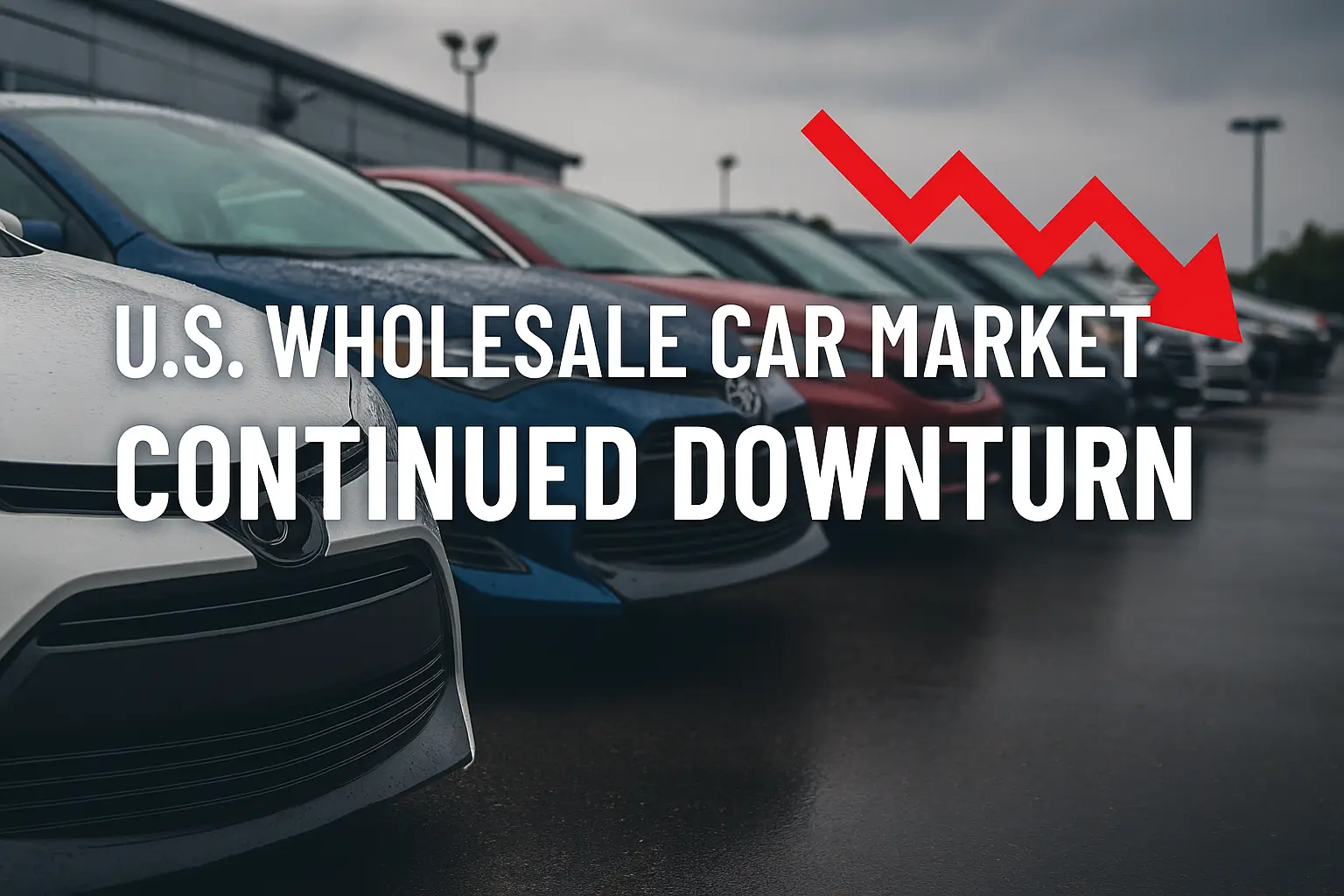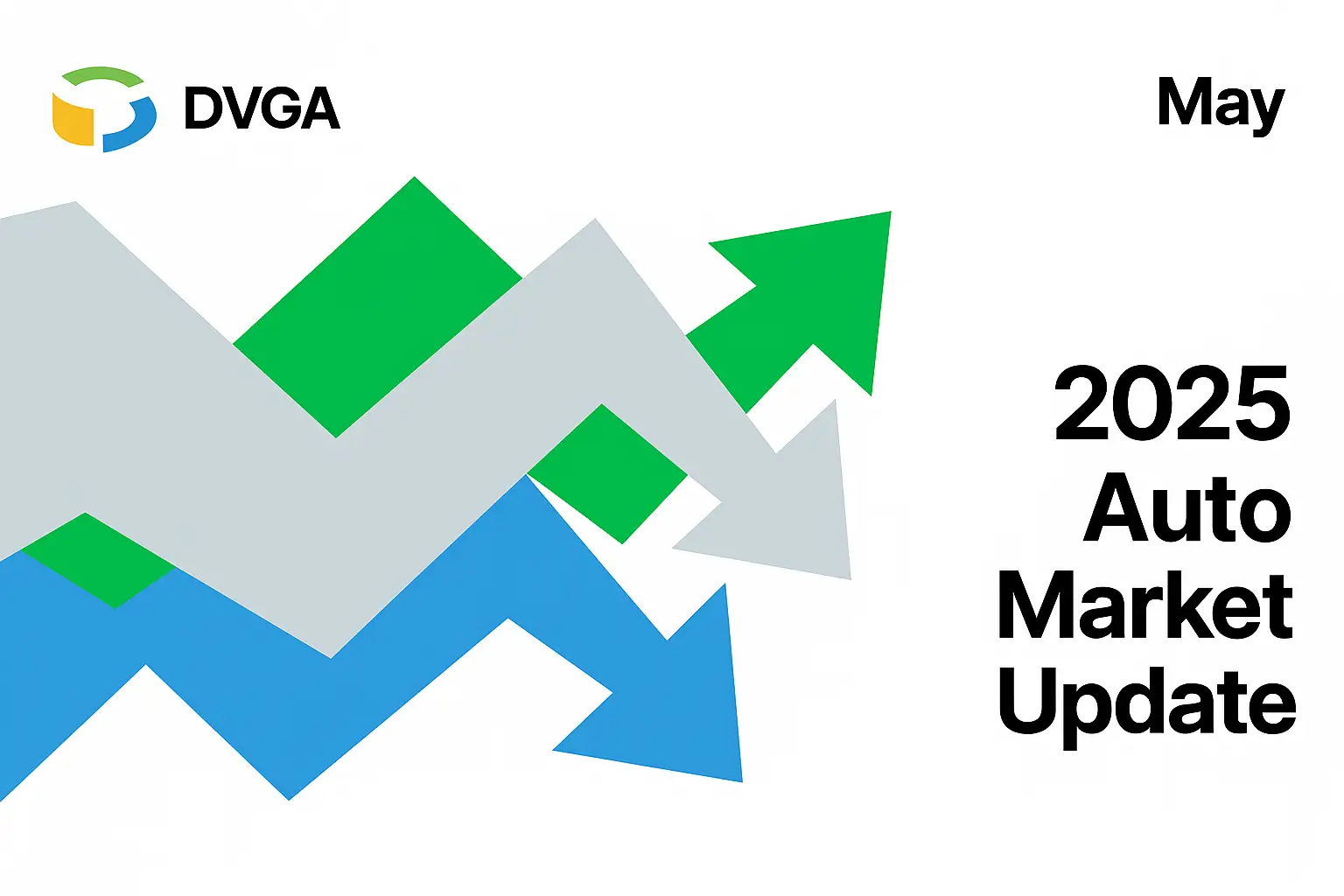Electric vehicles (EVs) have swiftly transitioned from a futuristic concept to a mainstream reality, increasingly dominating our roads. In just the second quarter of 2024, an impressive 700 new fast-charging stations have emerged, fueling the rapid expansion of the EV infrastructure at a remarkable pace.
But will this surging growth be sufficient for EV chargers to outstrip the number of gas stations by 2032? Let’s explore the trends, data, and driving factors behind this electrifying transformation.
Will Electric Vehicle Chargers Surpass Gas Stations by 2032? (PDF)
The Rapid Expansion of EV Charging Infrastructure
On April 16, driving an electric vehicle through the north of North Dakota became a lot less stressful. A new fast-charging station was activated at a Simonson Station Store gas station in Minot, next to a Red Wing boot shop. Similar stories are unfolding across the country, from El Paso, Texas, to Mobile, Alabama, as more fast-charging stations come online.

In just three months, the U.S. added 704 new public fast-charging stations, marking a 9% increase. Now, nearly 9,000 public fast-charging sites are available nationwide. This explosive growth indicates a strong push towards accommodating the rising number of EVs on the road.
Why EV Chargers Are on the Rise
Several factors contribute to the rapid increase in EV charging stations. One of the primary drivers is the significant investment by both government and private sectors. The Biden administration’s National Electric Vehicle Infrastructure (NEVI) Formula program, a $5 billion plan, aims to fill the gaps in the charging map. Additionally, North American operators are expected to spend $6.1 billion on charging infrastructure this year, nearly double their 2023 investment.

Retailers and gas station operators are also jumping on the EV bandwagon. In the second quarter alone, Shell debuted 30 new charging stations, Enel opened 11, Pilot Travel Centers added eight, and Flying J rest stops introduced seven. Even U.S. Bank and Waffle House are getting in on the action, adding chargers to their locations.
The Consumer Demand Driving Expansion
The demand for EV charging is skyrocketing. As EVgo Inc. Executive Vice President Sara Rafalson notes, the company is building bigger and bigger stations to keep up with demand. This surge is fueled by several trends:
- Increase in EV Sales: The International Energy Agency estimates U.S. sales of fully electric vehicles will soar to 2.5 million in 2025, up from 1.1 million last year.
- Extended Driving Ranges: Drivers are taking their EVs on longer trips than ever before.
- Urban Living: More EV owners live in multi-unit developments where they can’t charge at home.
- Faster Charging Technology: Newer EVs can charge more quickly, encouraging more drivers to use public stations.
The Profitability of EV Charging Stations
Charging stations are becoming profitable as well. According to Stable Auto, a charging network consultant, the average U.S. fast-charging station was plugged into a car 18% of the time at the end of the first quarter—nearly five hours a day. This utilization rate exceeds the 15% threshold needed to turn a profit.
Challenges and Misconceptions
Despite the impressive expansion of EV charging infrastructure, hurdles remain. Charging anxiety continues to be a major worry for potential EV owners. Many drivers simply don’t realize how many charging stations are actually nearby, leading to widespread misconceptions about their accessibility and availability.
Sam Houston, senior vehicles analyst at the Union of Concerned Scientists, emphasizes the importance of raising awareness about the growing number of stations. “You have a few anecdotes that suggest a lack of charging and that gets conflated to charging overall,” Houston explains. “It’s important to make sure people are aware of how quickly these stations are coming online.”
The Road Ahead: 2032 and Beyond
Given the current pace of expansion, it’s plausible that public fast-charging sites could outnumber gas stations in the U.S. by 2032. The ongoing investments in infrastructure, coupled with increasing consumer demand and advancements in charging technology, set a strong foundation for this transformation.
However, this shift won’t happen overnight. Continuous efforts from both the government and private sectors are essential to maintain and accelerate the growth of EV charging infrastructure.
In conclusion, while challenges remain, the trajectory of EV charging station growth is unmistakable. As we look towards 2032, the question isn’t just whether EV chargers will surpass gas stations, but how this change will reshape our driving habits and infrastructure. What do you think—will EV chargers outnumber gas stations by 2032, and how will this impact your travel plans?



